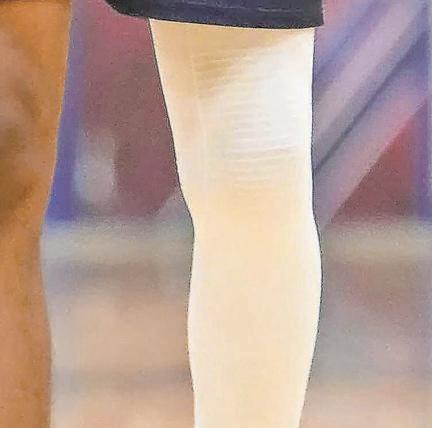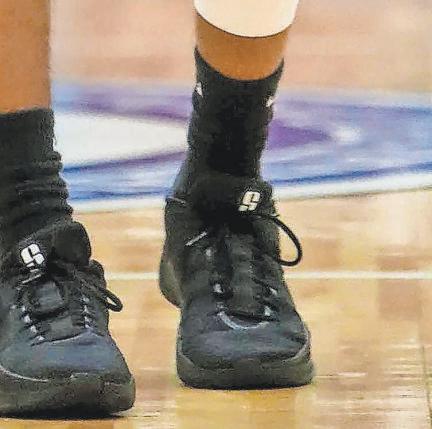



















































“Great Jeans” or Racial Coding?
The Beyoncé vs. Sweeney ad debate
Sydney Sweeney, star of Euphoria, is facing backlash for her recent denim ad with American Eagle. The ad plays on the pun, “Genes are passed down from parents... my jeans are blue,” and ends with the tagline “Sydney Sweeney has great jeans.” Many saw this as more than a wordplay, arguing it hinted at eugenics and old beauty ideals rooted in whiteness.

Critics pointed out the ad’s focus on Sweeney’s blonde hair, blue eyes, and “genetic” greatness reinforced outdated, racially loaded standards of beauty. It didn’t help that white models have historically been praised for features long shunned or exoticized when worn by Black women.
As the controversy grew, some people started comparing the campaign to Beyoncé’s Levi’s ad from last year. Beyoncé’s ad had zero genetic messaging. It was tied to her Cowboy Carter album and celebrated Black legacy in country music, a far cry from the coded undertones in Sweeney’s spot.
So why the comparison? It reveals how differently Black and white artists are treated. Beyoncé’s every move is over-analyzed. Sweeney, meanwhile, gets the benefit of the doubt until social media calls it out.
This is about how beauty is marketed and who gets to be the default. Until brands understand that language, visuals, and history matter, they’ll continue to encounter this kind of controversy, and we’ll continue to call it what it is.
Trump fires top labor official over jobs report ‘Conspiracy’
President Donald Trump recently fired Dr. Erika McEntarfer, head of the U.S. Bureau of Labor Statistics (BLS), after accusing her of tampering with federal job numbers to make him “look bad.” Trump claimed, without evidence, that a recent jobs report was “rigged,” even though experts say the numbers were routine revisions, not political sabotage.
The BLS is a government agency that tracks the economy, job growth, wages, inflation, all the stuff that matters to working families. It’s supposed to stay neutral, no matter who’s
president. But Trump’s firing of McEntarfer sends a dangerous signal that he’ll just fire the messenger if the numbers don’t match his narrative.
Why should Black communities care? Because data drives decisions. If the BLS becomes political, how will we know whether job programs are working for us? Who will report on unemployment in our neighborhoods or wage disparities in our industries?
Removing McEntarfer undermines confidence in one of the few agencies that gives us a real snapshot of our economy. And when truth gets replaced by spin, everyday people are left in the dark.
The U.S. State Department is proposing a new visa rule requiring visitors from certain countries to pay a bond of up to $15,000 to enter the United States. This would apply to people coming on business or tourist visas from countries with “high overstay rates,” many of which are in Africa, the Caribbean, and other parts of the Global South.
The bond is meant to discourage people from overstaying their visas. But in reality, it creates a massive financial barrier, especially for everyday travelers. Most people in such countries can’t afford to drop $5K, $10K, or $15K just to get a visa. Even if the bond is refunded later, the damage has already been done.
Black travelers are more likely to be impacted. Whether it’s families visiting relatives, students attending summer programs, or entrepreneurs coming to conferences, this policy makes it harder for people from our communities to access opportunity.
It sends the message, “We don’t trust you. You don’t belong here unless you can pay extra to prove your worth.”
• Texas Democrats flee state to prevent redistricting vote.
• Five things Houstonians argue about that outsiders will never understand.
• Black people reclaim rest as radical resistance.
By Tannistha Sinha
Facing threats of arrest, removal from office, and hefty fines, Texas Democrats say they’re not backing down. Despite Governor Greg Abbott’s August 4 ultimatum threatening arrests, fines and removal from office, House Democrats who fled the state to block a Trump-backed redistricting plan say they are standing firm in their fight to protect voting rights.
Their walkout has stalled a special legislative session and derailed the GOP’s controversial mid-decade redistricting map, which is projected to give Republicans up to five more U.S. House seats ahead of the 2026 midterms. Democrats argue the plan is an unconstitutional gerrymander designed to dilute minority voting power and cement long-term Republican control.
Now, even under mounting pressure, they’re vowing to stay the course.
Abbott cited Texas Attorney General Opinion No. KP-0382 (2021), arguing that a legislator who “abandoned” or “forfeited” their duties by intentionally breaking quorum could be removed via a quo warranto court process, thereby creating a vacancy.
He says this empowers the governor to fill vacancies under Article III, Section 13 of the Texas Constitution.
“These absences were premeditated for an illegitimate purpose—what one representative called ‘breaking quorum...’ In other words, Democrats hatched a deliberate plan not to show up for work, for the specific purpose of abdicating the duties of their office and thwarting the chamber’s business,” Abbott wrote in a statement.

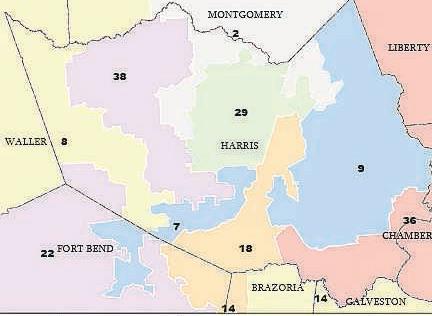
The Texas GOP redistricting map would redraw the lines in the Houston area. See the full map at DefenderNetwork. com. Credit: Capitol Data Portal
State Rep. Jolanda Jones took exception to the threat and said Abbott’s threats are “hollow,” saying there is no legal ground for Abbott to conduct arrests outside of Texas.
“Let me be clear: Abandonment under Texas law is not mere absence—it requires a voluntary and permanent relinquishment of duties,” she said. “I am fulfilling my duty by fighting against unconstitutional, racist, surgically precise redistricting maps that target Black and Brown Texans. As a trial lawyer with over 30 years of experience, I have a legal and ethical obligation to challenge injustice.”
Soon after the walkout, Texas state House Republicans voted to issue civil arrest warrants for the Democrats who fled. State House Speaker Dustin Burrows said he was prepared to recognize a motion to place a call on the House or “any other motions necessary to compel the return of absent members.” The chamber voted and adjourned.
“The sergeant-at-arms and any officers appointed by her are directed to send for all absentees whose attendance is not excused for the purposes of securing and maintaining their attendance under warrant of arrest, if necessary, until further order of the House,” said Burrows.
Since the Democrats are currently outside the jurisdiction of Texas authorities, their arrests remain uncertain.
The Texas House Democratic Caucus referred to the threats made against lawmakers’ seats and issued a statement: “Come and take it.”
“If one person’s gonna cheat and no one’s gonna stop it, why doesn’t everyone just do it?” said State Rep. Gene Wu, adding that his colleagues are taking it “day by day.”
Added State Rep. Ron Reynolds, “This is our generation’s Civil Rights moment and history will remember who stood idly by and who stood up.....When politicians draw racist lines
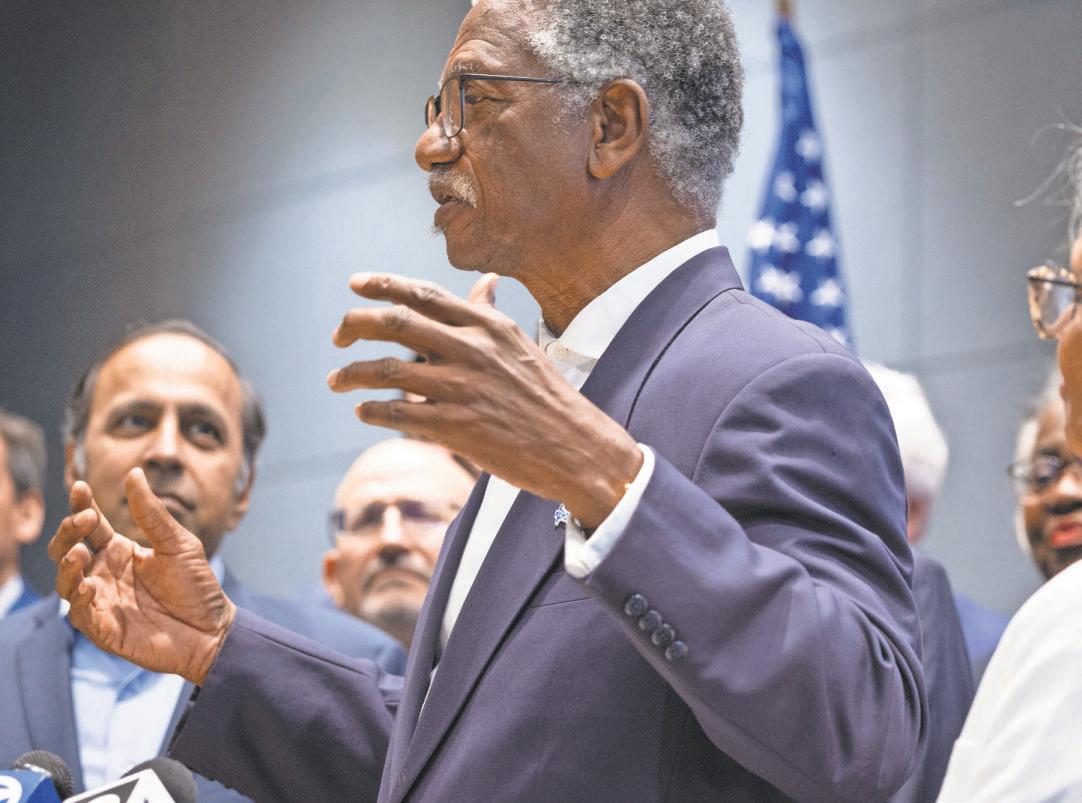
to divide us, we have a duty to stand united and push back.”
Under current lines, Texas Republicans hold 25 out of 38 seats, and Trump carried 27 of those districts in 2024. The new map would boost GOP-leaning districts to 30.
“The map is extreme invidious discrimination and accomplishes what the President has demanded of the Governor and more,” Congressman Al Green stated. “The DOJ (Department of Justice) demanded that the race card be played, and the Governor dealt the people of Texas a racist hand. I will be on the ballot and will announce more of my intentionality after I have engaged in deliberations.”
Apart from the increase in GOP seats, white citizen-voting majority districts rose from 22 to 24, and the majority-Hispanic districts increased by one to eight.
The 9th District, represented by Green, would shift east into eastern Harris County, a Trump-leaning seat under new lines, reversing its current deep blue status. The open 18th District would be reshaped into a solidly Black-majority seat, increasing Democratic concentration, resulting in the removal of the 9th District as a Black Congressional seat.
“So basically, the 9th & 18th are combined to create one African American district in Houston,” Reynolds said.
Presidential candidate Kamala Harris would hypothetically have received around
76% under the new map (instead of 69%) based on 2024 results under new contours. Garcia’s District 29 would undergo voter redistribution to pack Democrats into fewer districts while moving GOP voters into more competitive zones.
“The new redistricting maps out of Austin are exactly what we believed they would be: a power grab, driven by the felon in the White House, one which will likely be rubber-stamped by Governor (Greg) Abbott and his MAGA Republican allies,” Garcia said in a statement.
In Dallas-Fort Worth, U.S. Rep. Johnson’s 32nd District in Dallas would extend into rural areas and be reshaped to favor Republicans. Marc Veasey’s seat would remove Fort Worth entirely, potentially triggering a primary with Crockett or Johnson if redrawn lines overlap.
This is our generation’s Civil Rights moment and history will remember who stood idly by and who stood up.....When politicians draw racist lines to divide us, we have a duty to stand united and push back.”
REP. RON REYNOLDS
By Tannistha Sinha
When Marilyn Burgess first stepped into public life, she did not imagine she would one day oversee a $67 million budget, a staff of over 600 and the intricate machinery that keeps Harris County’s massive justice system running.

Today, as the Harris County District Clerk, Burgess leads with the values instilled by her parents, both in local leadership, back in rural Spearsville, Louisiana. Her father, Glover Rockett, served 12 years as a police juror and her mother, Oda, chaired the local hospital board before becoming Spearsville’s mayor. Those family dinner table conversations still shape how Burgess governs today. When Burgess was about eight, lessons in justice knocked on her door. The Ku Klux Klan burned a cross on her lawn because her father insisted on hiring Black workers for road projects.
“It came naturally to wanting to be involved in public service and try to find a way to make our community better than the way I found it,” she told the Defender.
A Certified Public Accountant (CPA) by training, Burgess earned her accounting degree from Louisiana State University and spent over 30 years managing business finances before becoming a public servant.
In the late 1990s, she served as executive director of the Texas Parent Teacher Association (PTA), working alongside lawmakers on issues like children’s health insurance and classroom sizes. Later, she moved to Houston in 2002 and served as President of the North Houston-Greenspoint Chamber of Commerce from 2002 to 2006. Her first foray into elected office

was a bid for Harris County Department of Education trustee, which ended in defeat. In 2018, she ran again, this time for District Clerk and won.
Burgess was determined to modernize the District Clerk’s Office, which includes managing court records, collecting court fees and summoning thousands of jurors each year. The courtroom process cannot proceed without her office being present, she wants people to know.
“We’re a behind-the-scenes cog in the Wheel of Justice in Harris County,” she said.
Early on, she discovered that female clerks were physically walking sensitive documents across downtown in the dead of night, a safety hazard she remedied by pushing for electronic transfers.
Burgess also streamlined how protective orders are processed, converting them to electronic records so they become enforceable faster, protecting vulnerable residents.
Under her leadership, the office launched an online jury pre-registration system that collects emails and cell numbers, letting staff send reminders and even cancel jurors if too many are called, saving money and sparing citizens unnecessary trips downtown.
Championing a raise in juror pay from $6 to $30 on the first day, Burgess said she spearheaded providing free parking and prioritizing outreach in Black, Latino and young adult
communities to better reflect Harris County’s diversity in the jury box.
“If you’re on trial for a criminal offense, you want to look at that jury box and see people that look like you…All those perspectives need to be at the jury deliberation table,” she said. “It leads to longer discussions, corrects inaccurate statements and prevents people from making racist comments.”
Burgess also helped expand the Integrated Justice Technology Committee, once a small group, into a seven-agency coalition including the District Attorney and Sheriff’s Office. Together, they oversee shared systems that handle arrests, filings and court data.
She now hopes her legacy will be twofold: A smarter, more accessible court system for attorneys and citizens alike and a jury pool that truly looks like Harris County.
Burgess also offers clear advice to young women interested in leadership: get involved early, volunteer on campaigns and build networks.
“Very few people win their first time they run for office,” she said. “No one knows how to run for office until you do it. I learned so much in that first outing of mine that when I got ready to do it the second time, I had much more confidence in what I was doing. I knew where to go, where to spend the money and how to raise money to run for office.”
By ReShonda Tate
As students gear up for the start of the school year, parents are speaking out against a new statewide school cell phone policy. Many call the new rule, implemented by Texas Governor Greg Abbott, unrealistic, unsafe and out of touch with today’s school climate.
House Bill 1481 is a new state law that requires public and charter schools to adopt policies restricting personal device use during instructional time. Students at all Texas campuses are banned from using personal electronic devices—including cell phones, smartwatches, tablets, earbuds and headphones—from when they arrive until the last bell rings. The bill does provide some flexibility for school districts, allowing them to decide whether to allow cell-phone use during extracurricular activities. Schools can also decide whether to restrict cell phone use by prohibiting students from bringing their devices to school or designating a “secure storage” space.
School leaders have until Sept. 18 to provide a written policy banning the use of cellphones in classrooms. But HISD has already announced its guidelines, taking its version one step further by banning cell phone use during lunch and passing periods, not just instructional time.

“Students may not use their device for any reason during the instructional day,” said HISD Chief of Schools Sandi Massey. “That means no calls, texts, photos, social media or internet access. Devices should not be visible or audible.”
While district leaders argue that the ban will reduce distractions and improve classroom focus, many parents say it puts students at risk, especially during emergencies.
“People want to say, we didn’t have cell phones when we were in school, but we also didn’t have mass shootings. I get the concerns about distractions, but there is nothing you can say to me if my child is caught in a school
shooting with no way to say goodbye,” said parent Lawonda Young.
Other parents noted that during lockdowns or high-stress incidents, students having access to a phone could be life-saving.
“What happens in the case of an active shooter?” asked Cynthia Barnett. “How will the children communicate with their parents to let them know that they’re okay—or not?”
While several districts are still working out their violation guidelines, HISD has outlined a three-strike disciplinary process:
• First offense: Device confiscated; parent must retrieve it and review the policy.
• Second offense: Phone held for one full school day.
• Third offense: Phone held for two full school days.
• Additional offenses may lead to further disciplinary actions.
The district made clear it is not responsible for any lost, stolen, or damaged devices.
Some parents, like Tiffany Stafford, questioned the legality and logistics of the policy.
“I’m totally fine with the ban,” she said, “but how do you just hold on to someone else’s property for days at a time?”
While backlash has been loud, some educators applaud the district for finally taking action.
“I am a 21-year vet in education and I think it’s a decision that should have been made long before now,” said Houston area educator Noelle Green. “Phones are a nuisance in schools and interrupt instruction. We didn’t have phones in school—why do kids need them now?”
Jeanine Robertson-Stewart added, “Parents call in the middle of lessons, students check social media and take messy pics, causing fights… I’m glad they banned them.”
Former educators and administrators echoed those concerns.
“As a former educator, I love the creation of a distraction-free environment,” said Linessa Frazier. “In fact, I need a timeout from my personal device, too.”
HISD Assistant Principal LaQuita Dalton noted, “Those phones cause so many issues that were done during the school day. They are addicted to these phones—it’s insane!”
Readers sound of on the policy.
By ReShonda Tate
A post recently went viral claiming that Black family reunions have declined by 47% since 1997. Te number sparked debate and refection across the internet. Many blamed the passing of elders, the disinterest of younger generations and the growing difficulty of organizing large-scale gatherings. But there’s just one issue: The statistic appears to be fabricated.
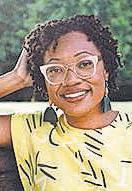
“The statistic is probably made up because so much of the internet is made up right now,” said Ashanté Reese, a native Texan and associate professor of anthropology at the University of Texas at Austin. “But if it is real research, I would really love to know who did it, because there’s just not a lot on Black family reunions. Tis is someone’s dissertation waiting to happen.”
Perception vs. reality
While the exact statistic may be unreliable, the sentiment it refects resonates with many Black families across the country.
Whether there’s a 47% drop or not, families say reunions aren’t what they used to be.
“Whether the percentage is accurate or not, the perception that reunions are fading is real,” said Reese. “And perceptions shape behavior.”
Reese, who has spent the past two years attending Black family reunions for her research on food and communal gathering, says the tradition is still alive — but evolving.
“I spent all of 2023 and a good part of 2024 going to people’s family reunions and the tradition is alive and well,” she said. “People probably gravitated to the post because it’s speaking to them. Family reunions mean something different when you’re already disconnected.”
She added that other factors, including the loss of ancestral land and family homes, are signifcant.
“Many people I interviewed talked about losing the places where their families used to gather. Homes. Farms. Tat land loss has a real impact,” she said.
Families and experts agree that the tradition faces real challenges, even if the decline isn’t measurable. Below are some of the reasons.
The COVID-19 effect
Te pandemic dealt a signifcant blow to the rhythm of annual family reunions. Due to health concerns, travel restrictions and shifing priorities, many families have yet to return to their pre-2020 traditions.
“My family had them yearly until COVID, which shifed the way the world worked,” said Títí Layo. “We gathered more for funerals than fellowship. We did a major holiday together and promised to go back to annual reunions.”
As matriarchs and patriarchs pass away, many families are lef without the central fgures who once rallied everyone together.
“Te matriarchs and patriarchs are passing away,” said Yvette Yearwood. “Te younger generations aren’t interested.”
“We are pretty sure that when we have reached the age where we can’t, then the reunion will die,” said Tori Lashon Tompson. “Family reunions are only what you make them. You can choose to keep coming up with reasons why you don’t come or choose to get involved to keep the family legacy strong. Either way, it’s a personal choice.”
Changing values
As family dynamics evolve, some say the biggest threat to reunions isn’t distance or money — it’s mindset.
“No one values the importance of family anymore. When you’re still mad about

something from 45 years ago and refuse to speak to relatives, that’s generational damage,” said Linda Spears. “Younger folks are more focused on brunch and social media than legacy and love.”
Planning a large family gathering is hard work — and ofen thankless. Once the few key organizers get burned out or pass away, the tradition can end unless others step in to carry the torch.
“One side of my family keeps it going! We
Family reunions are only what you make them. You can choose to keep coming up with reasons why you don’t come or choose to get involved to keep the family legacy strong. Either way, it’s a personal choice.”
have been meeting for over 78 years every year in August,” said CJ Harris Geaux. “I believe once the planners get exhausted or die, the skills of planning a large event go with them. Get the family reunion committee to include the younger generation. Let them interject new ideas and contribute to planning ahead for longevity.”
Family reunions can be costly, especially for planners, who ofen bear the fnancial burden when others don’t contribute. From food and lodging to venues and shirts, the expenses add up, and not everyone is willing or able to pay their share.
“We held nice family reunions as long as my cousin, Kathy, and I were footing the majority of the bill. We spent thousands,” said Tracy Mae. “Te last family reunion, approximately fve years ago, we only asked for $15 per person or $25 per family in one home. Tat wasn’t including the venue cost, which we paid out of our pocket. We made the cost as cheap as we could. My family members still complained about the cost. Tat was my last family reunion.”
For some families, old wounds and unspoken grievances make it hard to gather in peace. Without elder mediators to smooth over conficts, tensions ofen rise — or keep people away altogether.
“People are tired of years of ignored, swept-under-the-rug trauma and drama,” said Robert B. Jones II. “We just don’t wanna fake it anymore… and Madear/Big Ma/ Granny ain’t here to ‘make’ us.”
In the digital age, some family members choose to disengage entirely. Whether it’s skipping out on payments or simply not showing up, the trend toward avoidance has added another layer of strain to reunion planning.
“My family will not pay. Tey just show up and eat and leave — if they come at all,” said Tonja North.
Social media
While social media has made it easier than ever to stay in touch, some argue that it has inadvertently lessened the perceived
need for in-person reunions.
With updates, photos and family chats just a click away, fewer families may feel the urgency to gather under one roof.
“Social media has allowed families to connect more ofen,” said Lisa R. Peoples-Crafton.
“Some families may find that they can maintain connections and share experiences through social media or smaller, more frequent gatherings, making large-scale reunions less necessary.”
Te shif in how people connect also plays a role. For younger generations accustomed to digital interaction, the idea of planning or attending a multiday in-person gathering can feel more burdensome than celebratory.
Why it still matters
Despite the challenges, many believe that Black family reunions remain essential to cultural preservation, healing and identity.
“Family is where our original identity is formed — through love, silence, survival and the patterns we inherit,” said Veronica Lynn
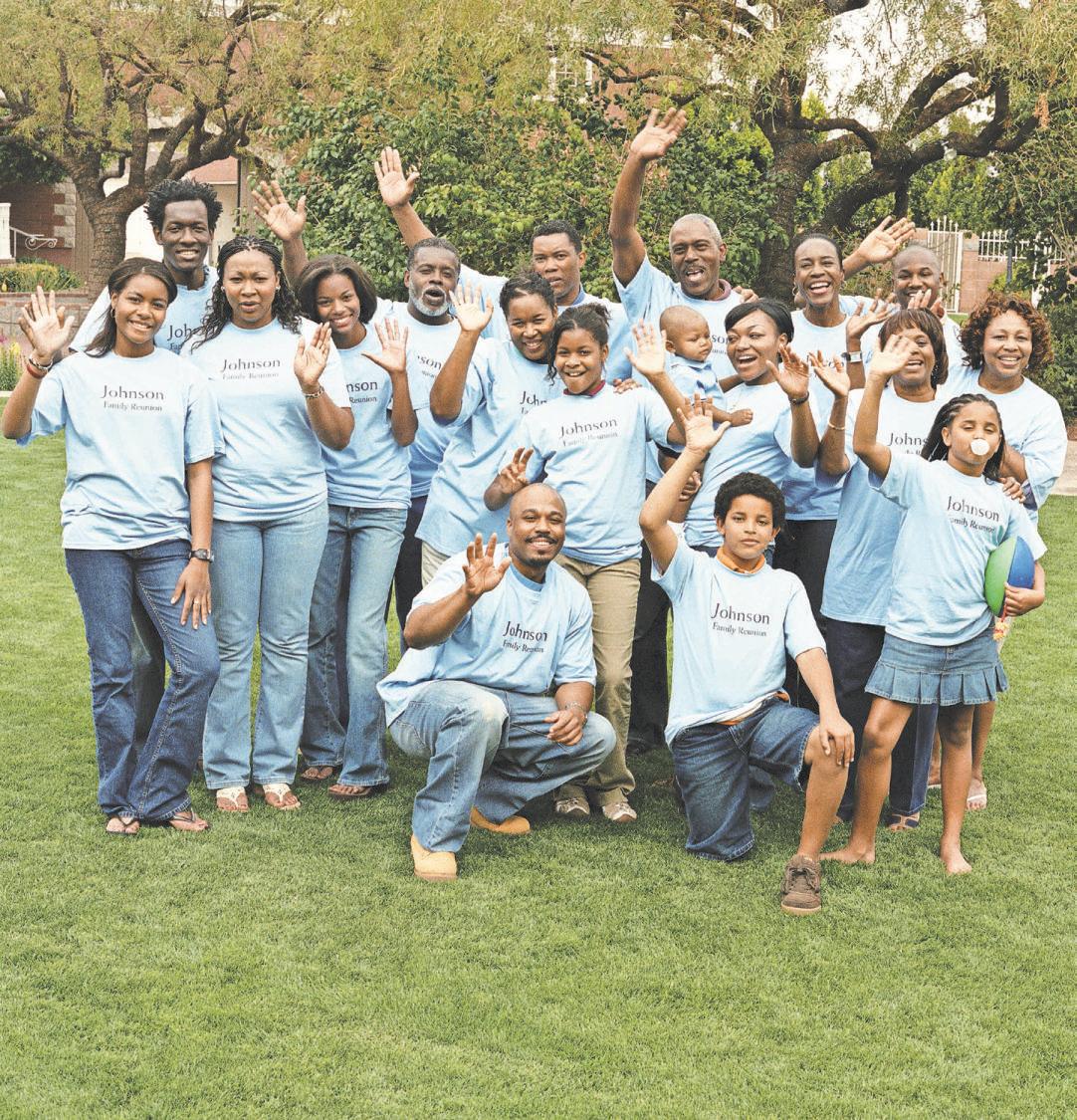
Clark, a transformational facilitator, author and relationship coach. “Reconnecting with family isn’t just about reunion
— it’s about repairing what’s been passed down. For Black communities, that repair is generational healing: Naming what was once unspoken, interrupting cycles of pain and restoring dignity to our lineage so our children inherit something more whole. Tat’s sacred work.”
Reunions are an opportunity to pass down oral history, share recipes and photos, meet distant cousins and celebrate Black joy across generations.
“Tese gatherings are vital. Tey root us in who we are and remind us of where we’ve come from,” said Reese.
For families who still host reunions, it takes creativity and persistence. Some have embraced hybrid or virtual events. Others incorporate digital tools like social media polls, group chats and reunion planning apps.
Tips for reviving the tradition:
• Start small: A one-day potluck or local picnic can rebuild momentum.
• Make it meaningful: Include memory boards, family trees, storytelling hours or ancestry presentations.
• Bridge the generation gap: Let younger relatives help plan events, emcee games or create reunion content for social media.
• Share the load: Rotate planning duties, fundraise in advance and set realistic expectations.
• Adapt: If a full-blown reunion isn’t feasible, fnd new ways to connect — group vacations, sibling weekends or annual holiday meetups.
Tough rumors of their death may be exaggerated, Black family reunions are undeniably at a crossroads. And whether the challenge is generational, logistical or spiritual, one thing is clear — the efort to preserve them is worth it.
“Family reunions aren’t dying,” said Reese. “They’re changing. And that’s not a bad thing. But we have to be intentional if we want to hold onto the parts that matter.”

By Laura Onyeneho
Community Cultivation Network (CCNetwork) officially opens the doors to Suites on Lawndale, a newly renovated, six-suite brickand-modern space intentionally built for local entrepreneurs.
The building is located at 5528 Lawndale. It once housed a machine shop owned and operated by its founder, Jazmin Jones’s grandfather. For over 25 years, he provided parts for the oil industry and more importantly, stability and opportunity for countless families in the East End.
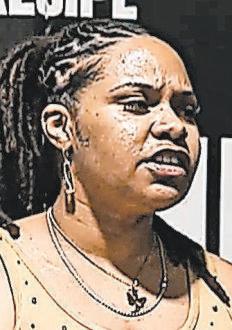
Now, after a thoughtful transformation led by Jones and her father, the space is reborn with a similar mission of community first.
“This land has always been about supporting the community,” Jones said. “My grandfather built something that gave so many families stability. Now, I get to carry that forward, but in a new way.”
The location has six customizable suites, shared conference areas and adjacency to CCNetwork’s multimedia production.
“When you’re a small business just starting out, there’s so much stress and expense. But here, you’re not alone,” Jones said. “You have people next to you building their dreams, too. It’s about finding your tribe.”
The journey to opening the Suites was far from easy. Jones purchased the building three years ago and began preliminary renovations, including roofing and HVAC upgrades. But funding issues stalled the project until this year, when she resumed construction and completed the transformation in just two months.
“Two months ago, there were no walls,” Jones laughed. “Now, we’ve built something beautiful and functional. It’s truly amazing.”
To apply for a suite, interested entrepreneurs can visit the Suites on Lawndale website, review available spaces and fill out an inquiry form. An application is made to determine fit and ensure alignment with the space’s vision.
While the hub is open to various business types, Jones said she’s particularly interested in complementing the creative ecosystem at CCNetwork next door.
“Hair, nails, branding, marketing, print shops, people selling physical products, we’re looking for businesses that can plug into the larger creative community,” she said. “Even food vendors. There’s a need for that in this area.”
Tiara Johnson, founder of The TLJ Agency, is a friend and collaborator with Jones. Her agency helps high-performing entrepreneurs build systems, revamp their brands and scale their income. For her, joining Suites on Lawndale was an easy decision.
“It was a no-brainer,” Johnson said. “The work CCNetwork is doing for the community is undeniable. Being part of this space has helped my business grow in every way, content, connections and collaborations.”
Johnson called the facility “a one-stop shop” where her brand has flourished thanks to the mix of production capabilities, event space and community engagement. She believes the energy of the building itself carries meaning.
“When people walk through the doors, I want them to feel the vibe of generational greatness,” Johnson said. “It’s like anything is possible here. You could build your business, create a live podcast or make a movie. That’s what this space evokes.”
Jones agreed.
“I want people to feel community,” she said. “That’s always my answer. Whether you’re just starting or expanding, this is a place where your ideas are welcomed and supported.”



Proves ‘elders’ can be a business, community
By Aswad Walker
To look at Diannetta Chargois, you’d never know she was 76 years old.
Her youthful look and energy show in the passion this Beaumont native displays as the owner of The House of Chargois (HOC). Chargois’s Third Ward shop (1709 Rosewood, 77004) is a multi-faceted boutique that offers original/ custom designs, ready-to-wear items, bridal and formalwear and vintage couture pieces.
And though she founded her Houston business in 2004, Chargois developed her passion for fashion at an early age, inspired by her grandmother, Clara Waddy.
“She taught me how to, first of all, knit, then I went from there to making my own clothes,” Chargois said. “I used to see models and other ladies, like Jackie Kennedy, for instance, who wore beautiful clothes, and I could make those clothes. So that’s how I got started.”
Chargois taught her daughter, Tramaine Chargois Singleton, how to sew. But Tramaine was more interested in drawing. Tramaine started drawing the pieces of clothing her mother made. Years later, Chargois used her daughter’s designs to make fashion masterpieces.
Tramaine, a lawyer, is now her mother’s business partner.
But it all started for Chargois, who went from “a little girl of eight years old to junior high and high school, continuously sewing; even sewing competitively, to the work she does today.
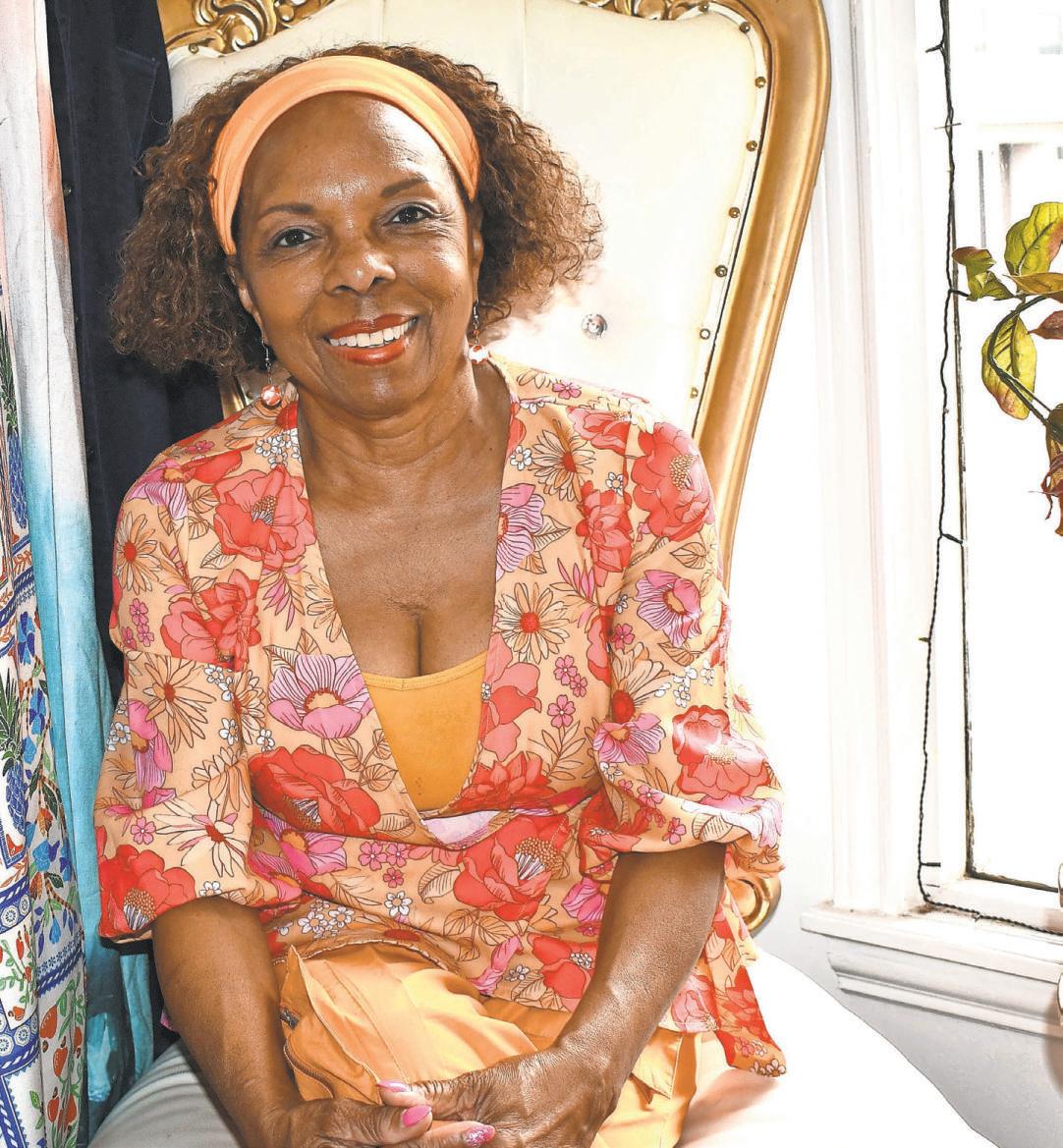
Chargois’s Third Ward business is really a continuation of the design work she did in Beaumont before she was hired by Shell Oil and moved to Houston.
The rest is history.
I believe if you want to do something, and you’re inspired to do it, then you should do it.”
DIANNETTA CHARGOIS
The HOC enjoys a fiercely devoted clientele that grows by the day.
“We cater to people who love formal wear. We have some ready-to-wear suits, dresses, shorts, just about anything that you want to wear,” Chargois said. “Our main focus is formal wear. We do rental and sales, tuxedos, formal gowns, bridal gowns, bridesmaid dresses and more.”
Family is everything, and so is your home.
Your Home. Your Dream. Your Family. Commerce Bank is here to help you build the life you imagined. We’ll walk you through the homeownership lending process, because we know your family and your home mean everything.
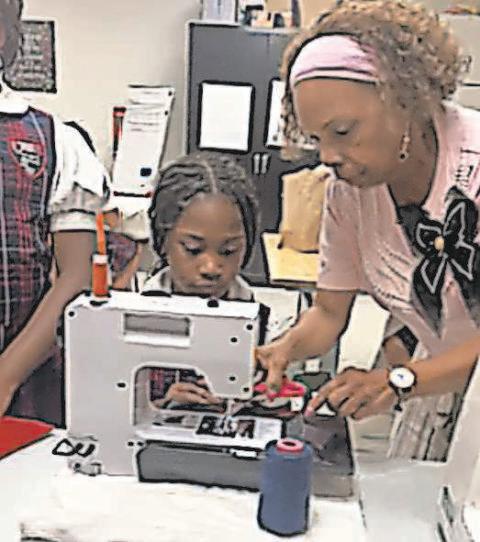
But the magic Chargois makes in her boutique is only half the story. One could argue that Chargois is even more impactful in the community.
Not only is she an energetic advocate for area Black businesses, but she is also active in her church (Wheeler Avenue Baptist Church; Women’s Auxiliary member) and her sorority (Alpha Kappa Alpha, Inc.).
But Chargois has reached near-legend status as someone more than willing to pass along her sewing acumen to others.
“My daughter and I, we started having

fashion shows, partnering with other designers to have those shows,” Chargois said. “We started an organization, the Alliance of Fashion Professionals, created with the idea of businesses working together and supporting each other.”
But where Chargois really shines is in her role as sewing instructor.
“I presently teach sewing at the Imani School, to little girls from third grade to eighth grade,” said Chargois, who currently conducts sewing classes in her shop.
Those classes are for girls aged eight years old to adults.
“We will also be doing sewing parties, all kinds of parties, that will be set up so that you can learn a skill that will benefit you the rest of your life, plus have fun doing it,” added Chargois.
“Ms. Diannetta Chargois, referred to as ‘Ms. D,’ is our inspiration, foot soldier, pillar, advocate and team player for all the good in our community,” said friend and business next-door-neighbor, Shearone Lewis, owner of UnWine on Almeda. “She participates and always encourages and promotes all of us in business to stand up, participate and put our very best forward.”
Along with being an avid Black business advocate and world traveler, Chargois willingly shares words of advice for anyone interested in going into business, but especially for Black women over 50 who are contemplating taking the entrepreneurial plunge.
“I believe if you want to do something, and you’re inspired to do it, then you should do it,” said Chargois, who wrote an article about this very topic, titled “Fake it until you make it.”
“Don’t allow anything to keep you from reaching your goal. If you don’t have the money, nobody knows that. Just get started somewhere. That’s how I did it. I don’t have a bunch of money to do anything. But with the support of my daughter and my family, I’ve been able to do what I do today.”
By Terrance Harris
Garlon Green certainly had a vision for his basketball journey, and a long career in the NBA was at the center of it.
The NBA piece hasn’t really materialized for the former Hightower standout, but he has managed to string together more than a decade of playing ball overseas. It hasn’t been the NBA, but he has been able to carve out a lucrative career while exposing his children to nations and cultures they may have only read about.
Making it even sweeter is that Garlon has been able to continue playing the sport he has loved as long as he can remember.
“My motivation is just the love of the game. I love hoops. I’ve always loved it,” Garlon said. “It was something that I was into when I was a little kid.
“Hoops was always something that I loved. Even to this day, I just turn on the TV just to watch the highlights.”
Garlon was drawn to the game by watching
his brother Gerald Green, who is five years older, play and wishing he could join him. Gerald is a local basketball legend who, a few years ago, virtually came off his couch to play with the Rockets.
The two always dreamed of playing together on the court, so four years ago, Gerald pitched the idea of them playing together in the BIG3. Garlon was initially hesitant because he wasn’t quite sure he wanted to commit during his overseas offseason.
But the lure of playing alongside his big brother and his love for the game were enough to convince him.
“Growing up, that was like one of my dreams to be able to share a court with him, play with him and do something together,” said Garlon, who had a brief run with the New Orleans Pelicans in 2018. “The BIG3 was giving us an opportunity to do that, so that’s been pretty cool.”
Gerald and Garlon have spent the last three summers playing together in Ice Cube’s
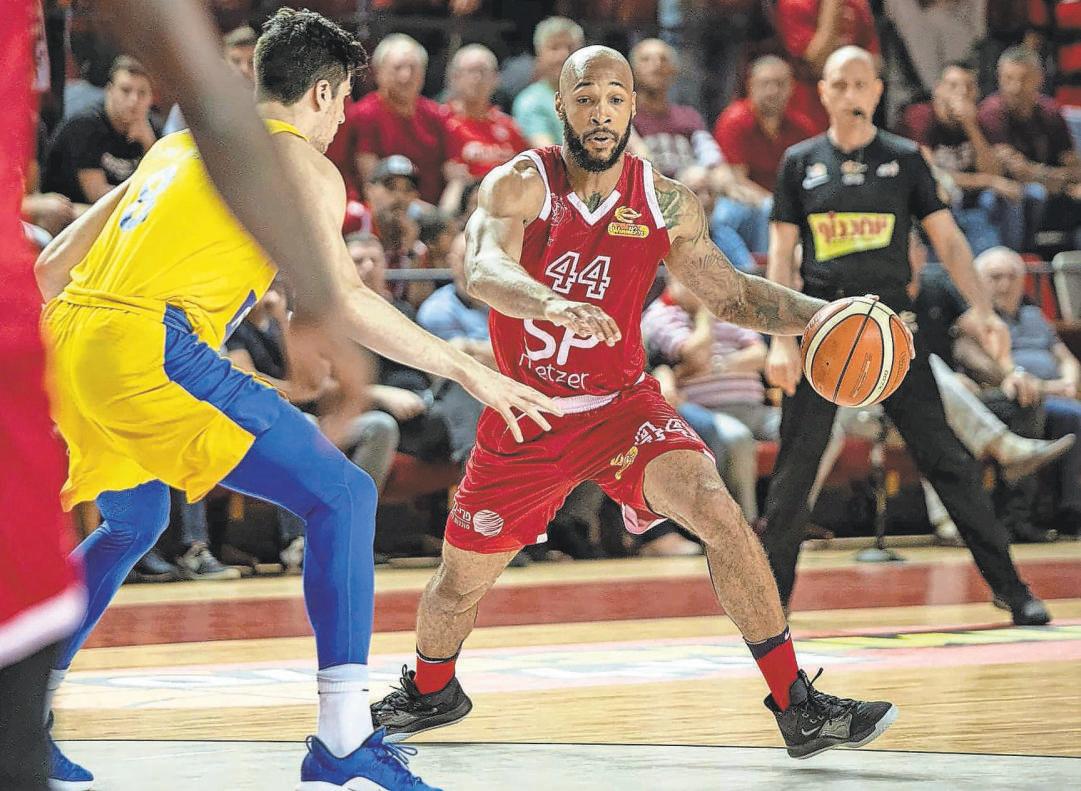

popular 3-on-3 league. Last season, Garlon made the title-clinching shot and won the BIG3 championship.
Garlon, who was in town when the BIG3 came to Houston recently as a member of the Rig Hands franchise, is back for a fourth summer. Gerald has sat this season out because of an injury. However, Garlon is still enjoying the game and the competition in a league comprising former NBA players and overseas players who are home for the summer and looking for a way to remain active.
“What you’ve got on the court is high-level athletes,” said Garlon, who also played at TCU from 2009-13 before beginning his overseas career. “Everyone is somewhere playing professionally, if not, having played in the league. So everybody has this level of mentality that they have to have. It’s like anything, it’s a competitive field, so the league is tough for sure.”
Rig Hands’ first-year head coach Calvin Murphy says Garlon fits the league’s mentality. Murphy, a former star guard for the Rockets and current Rockets commentator, questions why Garlon, 34, never got a real NBA shot.
“He is the kind of guy who should have had a chance to try to be in the NBA,” Murphy
said. “Unfortunately, it’s not enough room. I enjoy Garlon very much. We talk a great deal. We’ve gotten to be friends quickly. I’m wishing nothing but the very best for him.
“I’m hoping that this leads to something bigger and better for him.”
At this stage, the NBA doesn’t seem to be a priority for Garlon. The 6-foot-7 swingman is enjoying his time in the South of France, playing for the Anitbes Sharks, a high-level club.
He has appreciated his basketball journey and what it has afforded him and taught him along the way.
“It has its ups and downs like everybody has their ups and downs,” Garlon said. “But to be honest, by the grace of God, I’m thankful for my basketball journey. It’s taught me so much about myself, but also how to handle life, how to come closer to my faith with God and just have that spiritual foundation and just grow. I’m super grateful.
“The dream for me was always the NBA, like everybody else, but I also loved the game of basketball. So when the NBA was kind of out of reach, I wanted to hoop, so I was like, `Let’s go overseas.’ I got out of it more than I expected and that’s what I’m thankful for.”
By Jimmie Aggison
Aziz Olajuwon may carry one of the most iconic last names in basketball, but his rise is being fueled by more than family legacy— it’s being built on grit, game and relentless growth.
The son of Rockets Hall of Famer and two-time NBA champion Hakeem Olajuwon, Aziz made a thunderous statement at the National Basketball Players Association (NBPA) Top 100 Camp, where he averaged 20.6 points and 5.4 rebounds per game. The 6-foot-7 wing from Clements High School in Sugar Land entered the camp as a relatively quiet name in the Class of 2026, but left as one of its loudest.
“I felt determined to prove myself, to showcase my abilities that a lot of people don’t know about,” Olajuwon said.
Aggressive on both ends of the court, Aziz flashed a versatile skill set that caught national attention. His scoring came in a variety of ways—pull-up jumpers, midrange floaters, slashes to the rim—and defensively, he proved he could guard every position on the floor.
“I would describe my play as aggressive on both ends,” said Olajuwon. “I can shoot it, I can get to the rim, I can shoot the midrange off the dribble and most importantly, I can defend positions one through five.”
His confidence is rooted in production. After scoring 29 points in one game and 20 in another to open the camp, the national spotlight shifted toward the once-underrated prospect. He’s now a four-star recruit according to 247Sports and ranked No. 97 nationally.
“I know I can play, but while there are other players ranked above me, that just means I have more work to do,” said Olajuwon.
During his junior year at Clements, Olajuwon led his team with 19.9 points, 9.0 rebounds and 2.4 assists per game. The Rangers finished 19-12, falling in the first round of the Texas 6A Division 2 state
ABOUT AZIZ OLAJUWON
Class: 2026

Twitter: @olajuwon_aziz
Position: Guard / Forward
Height & weight: 6-feet-7, 205
pounds
Status: Uncommitted
Favorite subject: Math
Clements senior guard Aziz Olajuwon has worked hard and added to his game over the summer. Credit Jimmie Aggison/Defender.



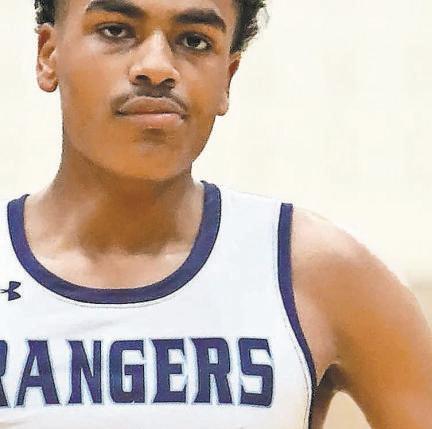
tournament.
Olajuwon’s breakout was undeniable.

“My ability to shoot consistently and drib ble at my height as well as defend quicker guards sets me apart,” said Olajuwon.

Next up for the rising senior: Compet ing in the Federal International Basketball Association U19 World Cup for Canada and a marquee appearance at EYBL Peach Jam— both key stages where he plans to further solidify his standing as one of the top wings in the 2026 class.
Olajuwon’s goal for the remainder of the summer is simple.
“Stay healthy and continue getting better,” said Olajuwon.

Though his recruitment hasn’t exploded yet, college coaches are paying close atten tion. With continued performances like these, scholarship offers are expected to follow quickly.
Olajuwon is more than just a last name. For Aziz, he is carving out his path, grace fully carrying the weight of legacy without being defined by it.
“I’m grateful to say that I haven’t felt that pressure,” Olajuwon said. “I just go out there and do my best.”




I felt determined to prove myself, to showcase my abilities that a lot of people don’t know about.”





